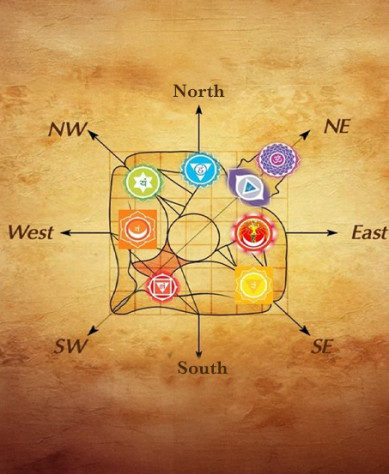
Vastu Shastra, often called the science of architecture, is an ancient Indian system that blends art, science, and spirituality. Rooted in the Vedic tradition, Vastu offers guidelines for designing buildings and spaces to align with natural energies, aiming to promote harmony, health, prosperity, and peace. While some see it as cultural heritage, others embrace it as a practical tool for balanced living.
How Vastu Came into Practice
The origins of Vastu trace back more than 5,000 years, to the Vedic period. Ancient scholars like Vishwakarma and Mayamata documented principles of construction in sacred texts such as the Vastu Purusha Mandala—a symbolic diagram that represents cosmic order. These guidelines were influenced by:
-
Observations of Nature – The position of the sun, wind directions, and seasonal patterns.
-
Astronomy & Astrology – Aligning structures with planetary influences.
-
Spiritual Beliefs – Creating harmony between the five elements (Pancha Mahabhuta: Earth, Water, Fire, Air, and Space).
The principles evolved not only as religious practice but as early environmental science—helping people build comfortable, well-lit, and ventilated spaces long before modern engineering.
Importance of Vastu in Different Places
1. Homes
A home built according to Vastu is believed to foster happiness, health, and financial stability.
-
Placement of Rooms: Bedrooms in the southwest for stability, kitchens in the southeast for balanced fire energy.
-
Main Entrance: Positioned to invite positive cosmic energy.
-
Benefits: Better natural light, air circulation, and a psychologically uplifting environment.
2. Offices & Workspaces
In a business setting, Vastu aims to enhance productivity, teamwork, and profitability.
-
Seating Arrangements: Leaders face north or east to channel confidence.
-
Cash Counters & Safe: Placed in the north for financial flow.
-
Meeting Rooms: Positioned for cooperation and constructive discussions.
3. Commercial Establishments
Shops, malls, and restaurants designed with Vastu can create inviting atmospheres and encourage customer loyalty.
-
Entrance Orientation: East or north-facing entrances attract more foot traffic.
-
Cash Register: Placed facing north for prosperity.
-
Display Layout: Arranged to guide customer movement smoothly.
4. Factories & Industries
Industrial Vastu focuses on efficient operations, safety, and profitability.
-
Raw Material Storage: In the southwest for stability.
-
Machinery Placement: Heavy machinery in the south or southwest for balance.
-
Administrative Offices: Located in the north or east to channel growth.
5. Educational Institutions
Schools and colleges apply Vastu for an atmosphere of learning and discipline.
-
Classroom Orientation: Facing east to receive morning sunlight, boosting focus.
-
Library Placement: In the southwest for intellectual growth.
-
Play Areas: Positioned in the northwest for vibrant energy.
6. Hospitals
Vastu in healthcare aims to support healing and recovery.
-
Patient Rooms: Facing east or north for positive energy.
-
Operation Theatres: In the east for precision and success.
-
Reception Areas: Located in the northeast for welcoming vibrations.
Why Vastu Still Matters Today
Even in the age of modern architecture, Vastu principles often coincide with energy-efficient, sustainable, and human-friendly design practices. By considering sunlight, ventilation, orientation, and spatial balance, Vastu can improve not only the aesthetics of a space but also the well-being of its occupants.
Final Thought:
Whether you follow Vastu as a spiritual belief, a design philosophy, or both, its focus on harmony with nature is timeless. In a world where we spend most of our lives indoors, creating balanced, positive spaces is not just tradition—it’s good living.
If you want to understand and apply Vastu to your home, office, or business, connect with Neha for personalized guidance rooted in ancient wisdom yet adapted for modern living.

Comments (0)
To comment, please Login